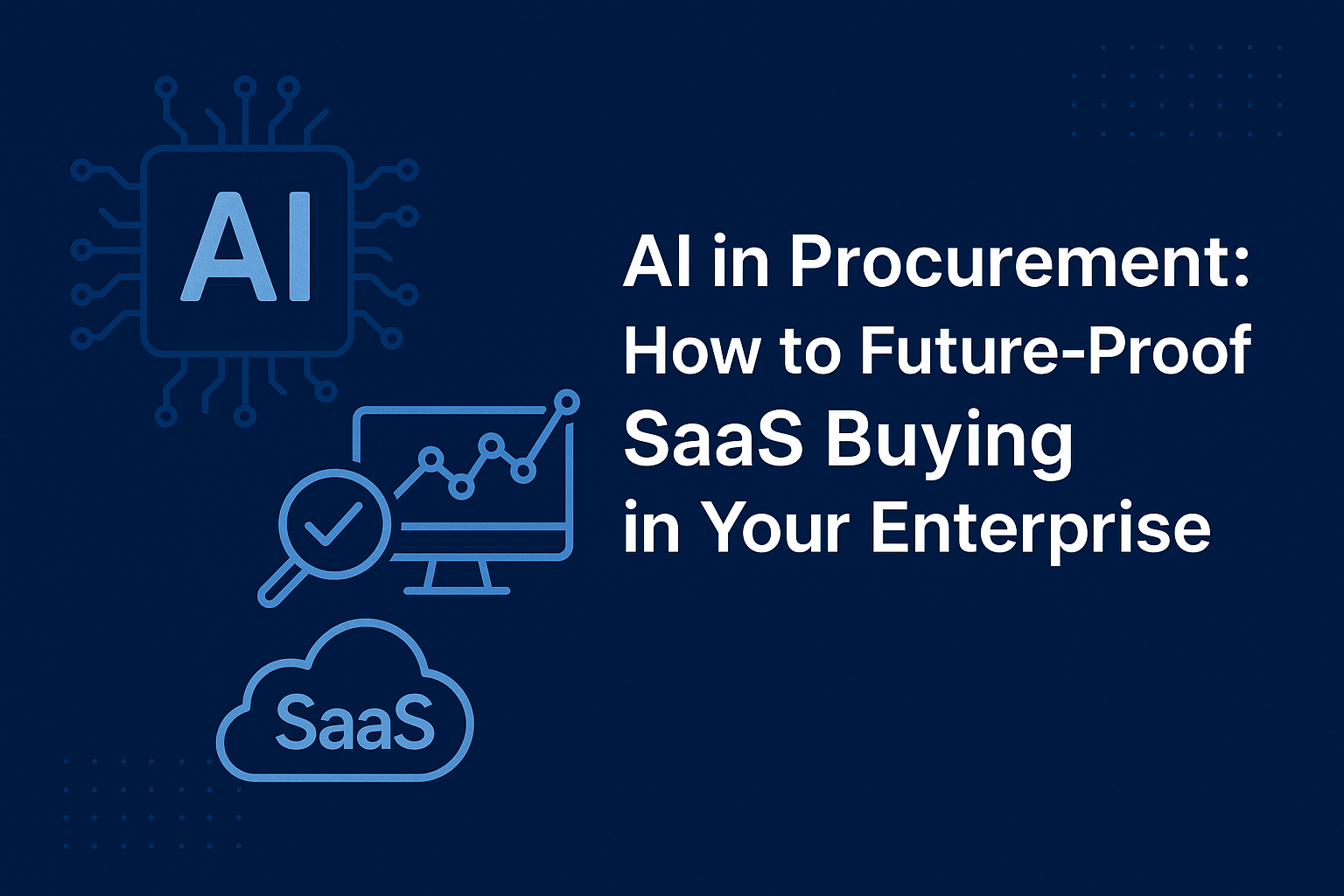Introduction
AI in procurement is transforming how enterprises manage purchasing, especially for SaaS. By applying generative AI, businesses can automate vendor analysis, optimize spend, and ensure compliance—building smarter, future-proof procurement strategies.
This article explores the role of procurement AI software, key applications, challenges, and how enterprises can leverage AI use cases to stay ahead in 2025 and beyond.
What is AI in Procurement?
AI in procurement uses artificial intelligence to enhance and automate sourcing and purchasing processes. It leverages ML, NLP, predictive analytics, and automation to streamline operations and improve decisions.
Key Functions:
- Automates purchase orders, invoices, and supplier data management
- Analyzes supplier performance, risk, and compliance
- Categorizes spend and identifies cost-saving opportunities
- Forecasts demand and optimizes inventory
- Extracts contract terms, monitors compliance, and flags renewals
- Detects risks like supply disruptions and financial instability
- Uses chatbots for supplier queries and updates
Examples: SAP Ariba, Coupa, Jaggaer
Types of AI in Procurement
- Machine Learning (ML): Predicts trends from historical data
- Natural Language Processing (NLP): Extracts insights from contracts and supplier communication
- Robotic Process Automation (RPA): Handles repetitive tasks like invoices and data entry
- Predictive Analytics: Forecasts demand and supply risks
- Computer Vision: Scans documents for compliance
Why AI Matters in Procurement
- Cost Savings: Through spend analysis and vendor negotiations
- Efficiency: Automates repetitive processes
- Risk Mitigation: Assesses supplier risks and compliance
- Data-Driven Decisions: Provides real-time insights
- Scalability: Manages large, growing datasets with ease
How to Implement AI in Procurement
- Start Small: Focus on high-impact, low-complexity use cases like spend categorization.
- Clean Your Data: Ensure structured, accurate procurement and spend data.
- Collaborate Across Teams: Involve procurement, IT, and data teams early.
- Prioritize Ethics & Transparency: Use explainable models and mitigate bias.
- Monitor & Improve: Track KPIs (savings, cycle time, satisfaction) and refine models continuously.
Key Applications of AI in Procurement
- Spend Analysis: Accurate categorization and cost-saving detection
- Supplier Discovery & Risk: Evaluate vendors on performance, price, and compliance
- Demand Forecasting: Optimize inventory and reduce waste
- Contract Management: Automate renewals, extract terms, flag compliance issues
- RFP Automation: Streamline sourcing and vendor evaluation
Challenges of AI in Procurement
- Data Silos: Fragmented data reduces accuracy
- Over-Reliance on AI: Human oversight is still critical
- Privacy & Security: Compliance with GDPR and other regulations is essential
- Bias Risks: Models may reflect data biases; audits and corrections are needed
Real-World Use Cases
- Spend Analysis: A retailer achieved 15% cost savings in six months
- Supplier Risk: A manufacturer cut disruptions by 20%
- Contract Optimization: A tech firm reduced review time by 30%
- Demand Forecasting: A logistics provider reduced stockouts by 25%
The Future of AI in Procurement (2025 and Beyond)
- Generative AI Growth: Faster contract drafting and negotiations
- Blockchain Integration: Transparency and traceability in SaaS procurement
- Hyper-Automation: End-to-end workflow automation
- Sustainability Focus: Prioritizing ESG-aligned suppliers
- Personalization: Tailored strategies driven by real-time data
How CloudEagle.ai Helps
CloudEagle.ai is an AI-powered procurement platform designed for SaaS optimization.
Key Features:
- Comprehensive Spend Visibility – Real-time dashboards, forecasting, and cost-saving insights
- Vendor Management – Automated discovery, risk scoring, and negotiation support
- Contract Optimization – Generative AI for drafting, renewals, and compliance monitoring
- Integrations – ERP, Coupa, Workday, SSO, and APIs
- Workflow Automation – Approval workflows, custom dashboards, and audit trails
Benefits:
- Up to 30% SaaS cost reduction
- Increased operational efficiency
- Scalability with enterprise growth
- Enhanced compliance and future-proofing
Conclusion
AI in procurement has moved from concept to reality. From spend analysis to contract management, enterprises are already realizing cost savings, efficiency, and resilience.
Generative AI, when combined with strong data practices and ethical safeguards, will define future-ready procurement. Tools like CloudEagle.ai empower organizations to scale smartly, optimize SaaS buying, and stay competitive in 2025 and beyond.


.png)
.png)